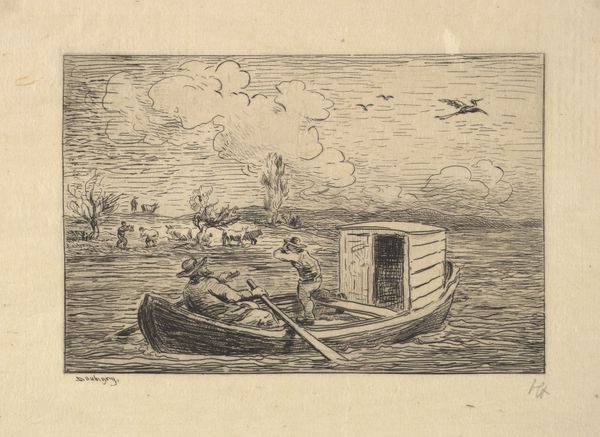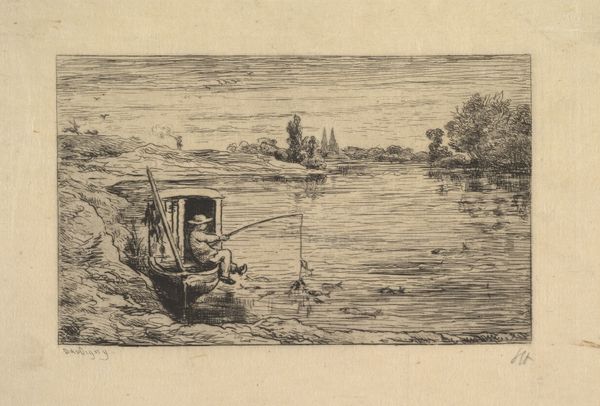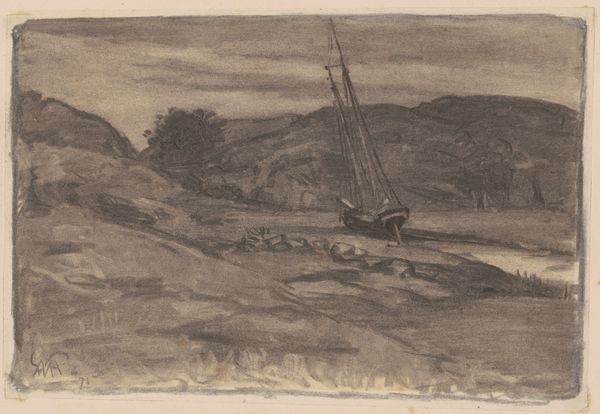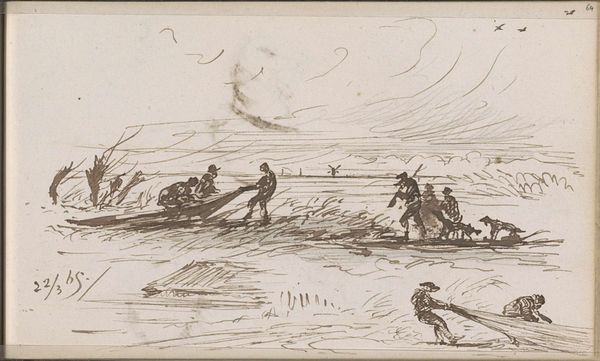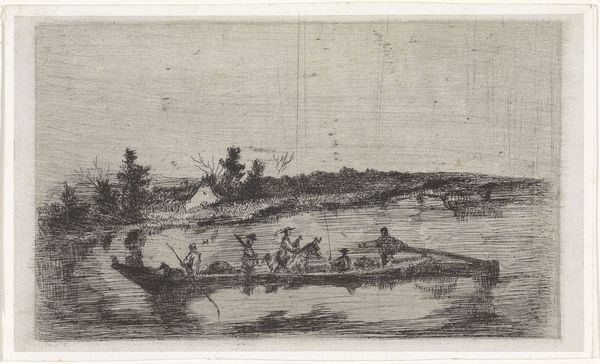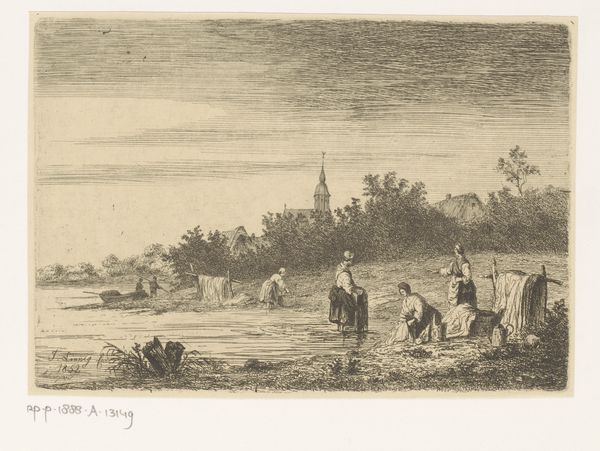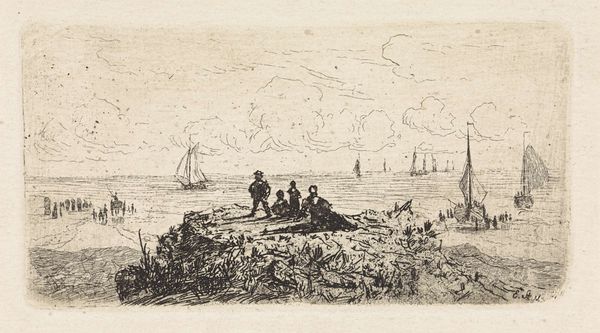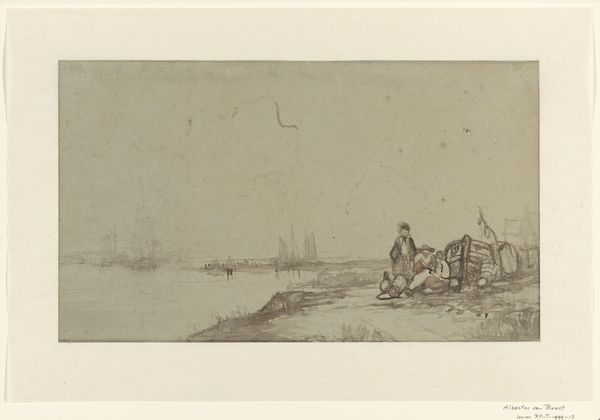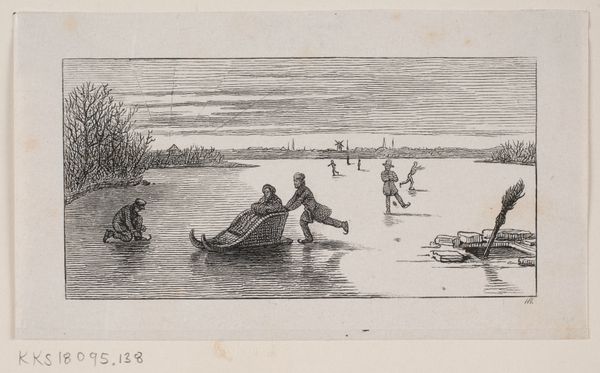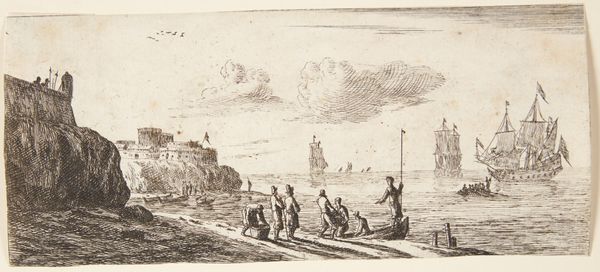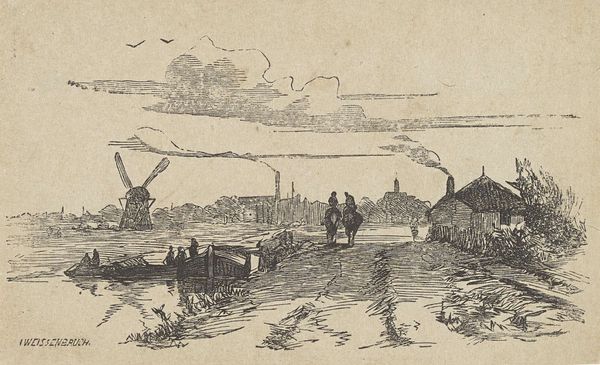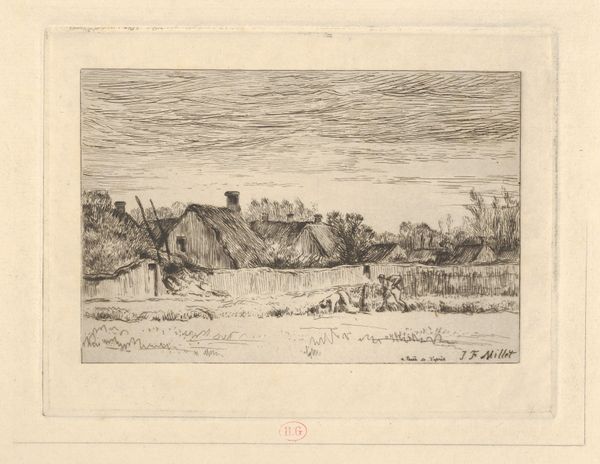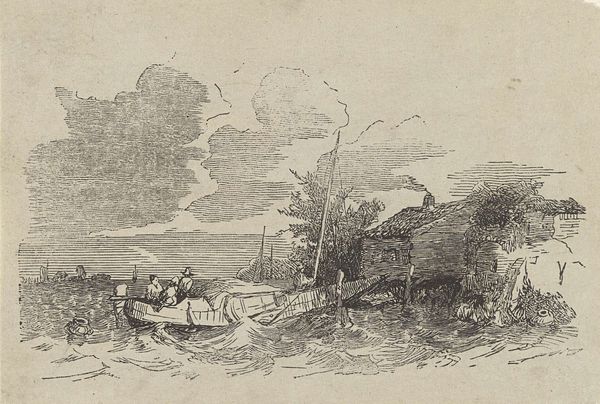
Dimensions: Image: 4 7/16 × 6 11/16 in. (11.2 × 17 cm) Plate: 5 7/16 × 7 3/8 in. (13.8 × 18.8 cm) Sheet: 6 5/8 × 10 1/16 in. (16.8 × 25.5 cm)
Copyright: Public Domain
Curator: Let’s take a closer look at Charles-François Daubigny's 1861 etching, "The Cabin Boy Tows the Boat," now housed here at The Met. It’s a remarkable print that offers a glimpse into 19th-century French river life. Editor: It does have that hushed feeling, doesn’t it? A sort of gentle, laborious quiet. It’s fascinating how Daubigny suggests vastness with such minimal lines, creating this intimate moment that still feels… expansive. You can almost hear the gentle lapping of water against the hull. Curator: Absolutely. Daubigny, known for his commitment to painting "en plein air," embraced etching as a means to capture those fleeting atmospheric effects that characterized the Barbizon School. "The Cabin Boy Tows the Boat" provides a wonderful example. Notice how the labor of the boy pulling the boat becomes the central narrative. This print reflects Daubigny’s social consciousness and the realities of labor during the industrial era, yet through a sympathetic lens. Editor: It’s the kind of piece that lingers in your thoughts. The ducks swimming by as the boy toils—it’s all quietly poignant, no? There's also something about the solitude of the figure inside the boat that brings to mind themes of isolation within community. Perhaps it is too simplistic of me, but I think of us all adrift while others do the heavy lifting. Curator: Well, his artistic circle valued sincere and accessible portrayals of everyday people; it wouldn’t be too far off to link his stylistic choices and values to social empathy. The piece engages with questions about visibility and agency that echo across Daubigny’s oeuvre. He wasn't just depicting pretty landscapes, he was subtly commenting on the societal roles that shaped those landscapes. Editor: Indeed. All that from such spare marks! Thanks to that etching, there’s almost a melancholic resonance between us, the water, and the world beyond it. It almost reads like a small philosophical poem. Curator: I completely agree. The dialogue between labor and leisure, and figure and the nature within its historical context is an artistic question Daubigny clearly prompts, doesn’t he? Editor: Right, a silent question rippling through the calm. Time to move on to another view now.
Comments
No comments
Be the first to comment and join the conversation on the ultimate creative platform.
